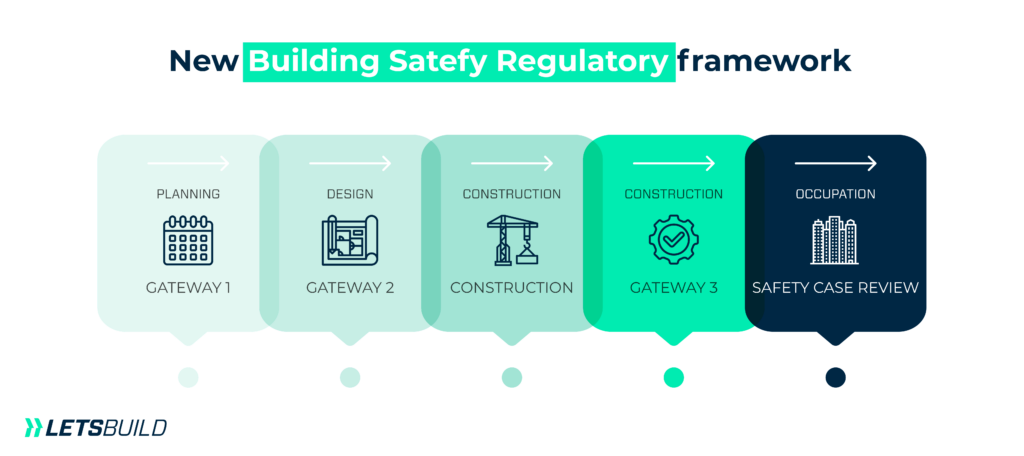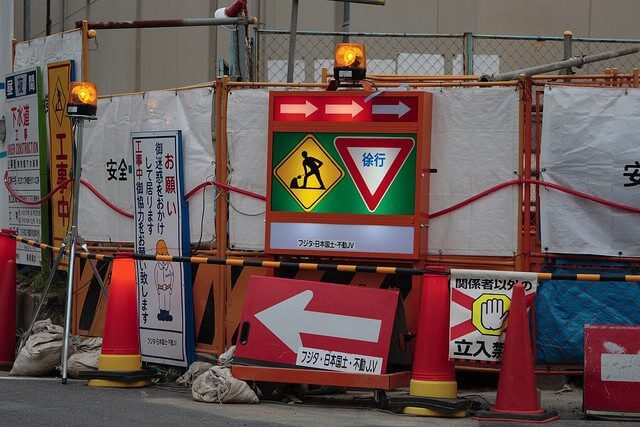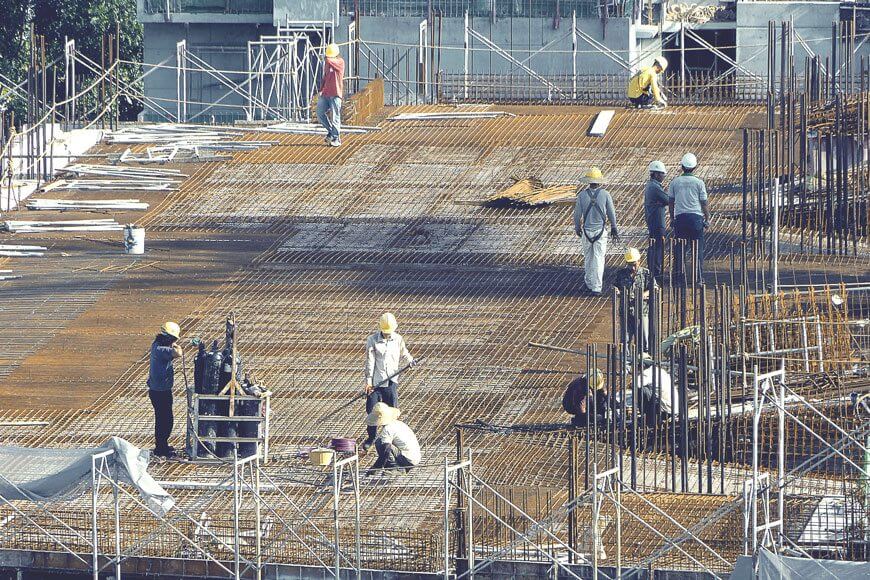On July 5, 2021, the Building Safety Bill, which was first published in July 2020, was introduced in Parliament. This significant piece of legislation, which evolved via multiple modifications and discussions, aims to radically alter how high-rise buildings (HRBs) are controlled and regulated in the United Kingdom. It was evident from the start that this Bill would face significant scrutiny and potential revisions as it moved through the legislative process. Indeed, Royal Assent was finally granted on April 28th, 2022, with some provisions set to take effect as late as 2024.
Download our guide: Building Safety Act Guide for Contractors & Building Owners
Why is this Act Being Introduced?
The Grenfell Tower disaster in London in June 2017, which exposed the catastrophic implications of weak building safety rules, sparked the creation of the Building Safety Act. The incident exposed serious flaws in how high-rise buildings were built and handled, sparking a public call for government involvement. The Act aims to prevent a calamity of this size from occurring again by establishing tighter safety standards and rigorous regulatory control.
The draft Bill underwent considerable pre-legislative review and was expected to face a difficult path through both the House of Commons and the House of Lords. The legislative process was meticulous and methodical, reflecting the gravity of the situation and the significance of developing a strong framework to protect inhabitants and assure building safety.
What is the Golden Thread in Construction?
The “golden thread” is a key component of the Building Safety Act, which aims to improve building safety by imposing stricter requirements on higher-risk residential buildings. This effort aims to improve fire and structural safety by ensuring that comprehensive, accurate, and accessible information is available throughout a building’s lifecycle.
Historically, building safety management has been hampered by insufficient, outdated, or erroneous data. The golden thread addresses this issue by requiring the development and maintenance of a detailed digital record-keeping system that records all aspects of a building’s design, construction, and maintenance from start to finish and beyond.
To meet the golden thread standards, critical information and papers must be gathered and stored before any construction activity on a higher-risk building begins. This digital system must be maintained electronically to ensure that all data is correct, current, and protected against unauthorised access. Furthermore, it should be constructed to be easily transferred, so that critical information is easily accessible and legible by its target audience. Consistency in language, vocabulary, and meanings is also important for avoiding misunderstandings and ensuring clarity among all stakeholders.
Watch our webinar: The golden thread explained: tools and strategies for seamless compliance

Mapping the New Building Safety Regulatory Framework
The adoption of the Building Safety Act has resulted in a major shift in how higher-risk buildings are controlled in the UK. Gateways, or decision points, are crucial to this new paradigm. These Gateways are strategically placed throughout the design and construction phases to impose strict safety requirements and assure compliance at all key stages.
Gateway 1: The first gateway happens during the planning application stage. Fire safety issues inherent in relevant building design plans must be shown prior to granting planning authorisation. This ensures that safety is prioritised from the start of the project, laying a solid basis for all later phases.
Gateway 2: Before construction can commence, the Building Safety Regulator (BSR) must determine that the design meets the functional requirements of the building standards. A building control approval application must be submitted and accepted, certifying that all planned work meets safety requirements. This process is critical for preventing potential safety issues from being introduced into the project.
Gateway 3: After construction is completed, the final Gateway is activated. A completion certificate application must be submitted and authorised to demonstrate that the higher-risk residential building (HRRB) meets all applicable construction regulations. This approval is the final requirement before a building can be legally occupied, assuring that the finished structure is safe for residents.
However, transferring information across several systems and formats can inhibit decision-making and impede stakeholder collaboration. This lack of consistency can cause submission and approval delays at critical stages, jeopardising safety and compliance.
Read Also : Everything You Need to Know About Gateway 3 and Building Safety Act
Read Also : What are the common safety violations in construction work and how can you avoid them?
Easy Compliance with LetsBuild LB Aproplan
To overcome these problems, a platform suited to the Building Safety Act’s gateway criteria is required. LetsBuild’s LB Aproplan solution is intended to streamline the process by consolidating all relevant data and paperwork into a single, easily accessible digital platform. While LB Aproplan does not offer a full Gateway 3 management platform, it does give powerful tools for managing snagging, checklists, and compliance workflows, which are critical for ensuring that all regulatory obligations are satisfied quickly.
LB Aproplan allows contractors to organise and manage critical information, ensuring that all safety standards are documented and easily accessible. This not only improves communication among stakeholders, but it also speeds up the approval process, reducing costly delays and ensuring that every project stage fulfils the strict standards stipulated by the Building Safety Act.
Is the Golden Thread a Legal Requirement?
The Golden Thread is a regulatory requirement under the Building (Higher-Risk Buildings Procedures) Regulations 2023. This rule oversees the design, construction, and management of high-risk buildings, ensuring that safety is maintained throughout their existence. The golden thread responsibility necessitates a thorough approach to creating, maintaining, and keeping vital building information, making it a key component of the new regulatory framework.
Key Regulatory Mandates
The regulation establishes numerous important procedures that support the golden thread idea, ensuring thorough monitoring and accountability in building safety.
- Building Control Approval Applications:
- At Gateway 2, the customer must seek building control approval. Before any work can begin, the Building Safety Regulator (BSR) must receive and approve submissions. This is a critical “stop/go” point. The application must describe how the project will meet the new dutyholder competence standards, keep the golden thread intact, and comply with mandatory occurrence reporting requirements.
- Change Control:
- A strong change control method must be implemented for any changes to project management or construction that differ from the approved building control application. The approach includes three sorts of changes: recorded, notifiable, and substantial. The steps for managing multiple modifications are clearly described.
- A recorded change, defined as any modification that is not designated as notifiable or major, must be documented in the change control log prior to execution. The principle contractor is in charge of maintaining this log, ensuring that it contains information proving that the change has been considered and will comply with applicable building requirements.
- Mandatory Occurrence Reporting:
- Before construction begins, principal responsibility holders must establish and manage a mandated occurrence reporting system. This system enables rapid reporting of safety incidents and ensures that everyone working on or visiting the site understands how to utilise it.
- Once construction begins, the principle contractor and principal designer must continually evaluate the building and design work for any safety hazards, ensuring that any potential problems are detected and remedied as soon as possible.
- Handover of Information on Completion:
- The client responsible for a higher-risk building (HRB) must keep a complete copy of specific “golden thread” information, which includes details on fire safety (Part B), ventilation (Part F), energy efficiency (Part L), and overheating prevention (Part O)—collectively referred to as “BFLO information.”
- This information must be provided to the appropriate person by the completion date of the work or before the building is occupied. The principle contractor must guarantee that this handover preserves the original filing structure and that the information is in a readable, retainable, and updateable format for the recipient.
- Completion Certificates:
- A completion certificate application must precisely reflect the building’s “as built” conditions, not the original design. This procedure, also known as Gateway 3, is essential to the strict regulatory framework established by the Building Safety Act.
- It is an infraction under the Act to occupy a new residential unit in a higher-risk building without a completion certificate. Only after obtaining this certificate can the accountable person enable lawful occupancy.
Who is Responsible for Maintaining the Golden Thread of Information?
Maintaining the golden thread is a shared obligation among various key stakeholders in the design and management of higher-risk structures. The information included inside the golden thread must be easily available to regulatory organisations such as the Building Safety Regulator (BSR), Fire and Rescue Services, and other applicable building authorities. It must also be made available to accountable persons (APs) and primary accountable persons (PAPs) in charge of the building, as well as inhabitants or owners of residential units within it.
If you work in any of the following roles, you are legally compelled to keep a digital copy of the information required by the golden thread:
- Client, Principal Designer, or Principal Contractor:
- If you are a client, primary designer, or principal contractor working on a higher-risk building project, you must keep a complete digital record of all building work and safety information. This includes complete documentation of design decisions, construction methods, safety precautions, and any changes made throughout the project.
- Accountable Person (AP) or Principal Accountable Person (PAP):
- As the accountable person or principle accountable person in charge of a high-rise residential building, you must keep the golden thread up to date and reflect the building’s current situation. This includes not only keeping records of all completed work, but also ensuring that continuing operations and maintenance tasks are thoroughly documented.
Ensuring Compliance and Safety
The goal of maintaining a strong golden thread is to offer a transparent and comprehensive digital record that assists in the successful management of building safety. The golden thread helps to prevent safety issues and assures compliance with building standards by providing all necessary parties with accurate, up-to-date information. It allows regulatory bodies to properly monitor building safety and provides occupants and building owners with the information they need to manage their properties safely.
In summary, preserving the golden thread is crucial to developing a culture of safety, transparency, and accountability in the design and management of high-risk structures.
LetsBuild: Your Partner from Construction to Safety, Through Gateway 3
Navigating the intricate requirements of the Building Safety Act can be difficult for any construction professional. From initial planning to final handover, ensuring compliance at all stages is critical to the safety and integrity of higher-risk structures. This is where LetsBuild’s LB Aproplan solution proves to be a useful collaborator.
LB Aproplan is intended to help construction teams by reducing processes and improving communication, thereby ensuring that all areas of a project are managed efficiently and safely. Let’s look at the specific advantages of LB Aproplan for snagging, site management, and handover.
Benefits of LB Aproplan for Snagging, Site Management, and Handover
1. Snagging and Issue Management
Snagging is an important phase in the building process since it ensures that all faults and concerns are detected and addressed before a project is considered complete. LB Aproplan simplifies snagging by offering a digital platform for site teams to document, track, and resolve concerns in real time.
- Real-Time Issue Tracking: With LB Aproplan, site managers can register defects immediately on their mobile devices, including photographs and full descriptions for clarity. This real-time feature allows concerns to be addressed quickly, saving delays and enhancing overall project quality.
- Streamlined Communication: The platform allows for smooth communication among all parties involved, from contractors to clients, ensuring that everyone is aware of outstanding issues and their resolution status. This transparency helps projects stay on pace and avoid costly delays.
2. Site Management and Compliance
Managing a building site requires managing multiple teams, tasks, and resources while adhering to safety rules. LB Aproplan offers solutions to simplify these complicated processes, increasing site management efficiency and compliance.
- Comprehensive Checklists: LB Aproplan provides customisable checklists to ensure that all tasks are completed to the required standard and in accordance with regulatory norms. This capability is especially essential for complying with the Building Safety Act’s severe safety requirements.
- Digital Documentation: By digitising all site documentation, LB Aproplan ensures that vital information is always available, current, and safe. This not only improves compliance but also increases efficiency, since site teams can rapidly obtain the information they require without having to trawl through paper documents.
3. Handover Process
The handover procedure is an important step in any construction project, especially for higher-risk buildings subject to Gateway 3. LB Aproplan streamlines this procedure by ensuring that all required documentation is complete, accurate, and ready for submission.
- Handover Templates: LB Aproplan offers pre-built templates for handover documents, ensuring that all necessary information is included and properly formatted. This lowers the possibility of missing or incomplete documentation, which can cause delays in the certification of completion certificates.
- Golden Thread Support: While LB Aproplan is not a comprehensive Gateway 3 management platform, it helps to create and maintain the golden thread by centralising the relevant safety paperwork. This makes it easy to meet regulatory obligations and guarantees that all information is immediately available for examination.
A Partner in Building Safety and Success
LetsBuild, through LB Aproplan, is more than just a software provider; it is a collaborative partner in ensuring that construction projects are done efficiently, safely, and in full accordance with regulations. By focussing on snagging, site management, and handover, LB Aproplan enables construction teams to produce high-quality projects that fulfil the Building Safety Act’s demanding standards.
For additional information on how LB Aproplan can help you with your next project, contact LetsBuild to schedule a demo or chat with one of our specialists. Together, we can create safer, more compliant buildings.




